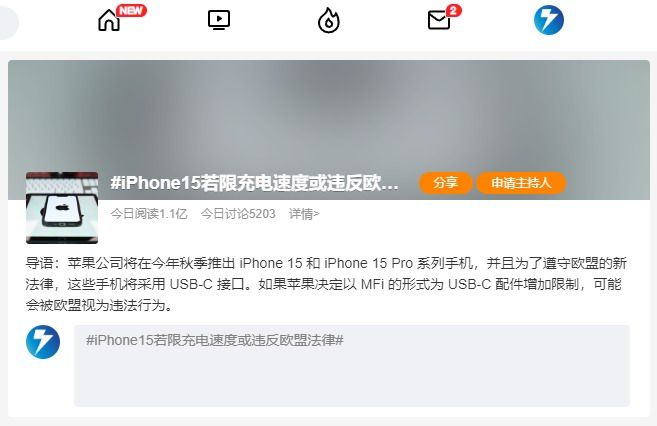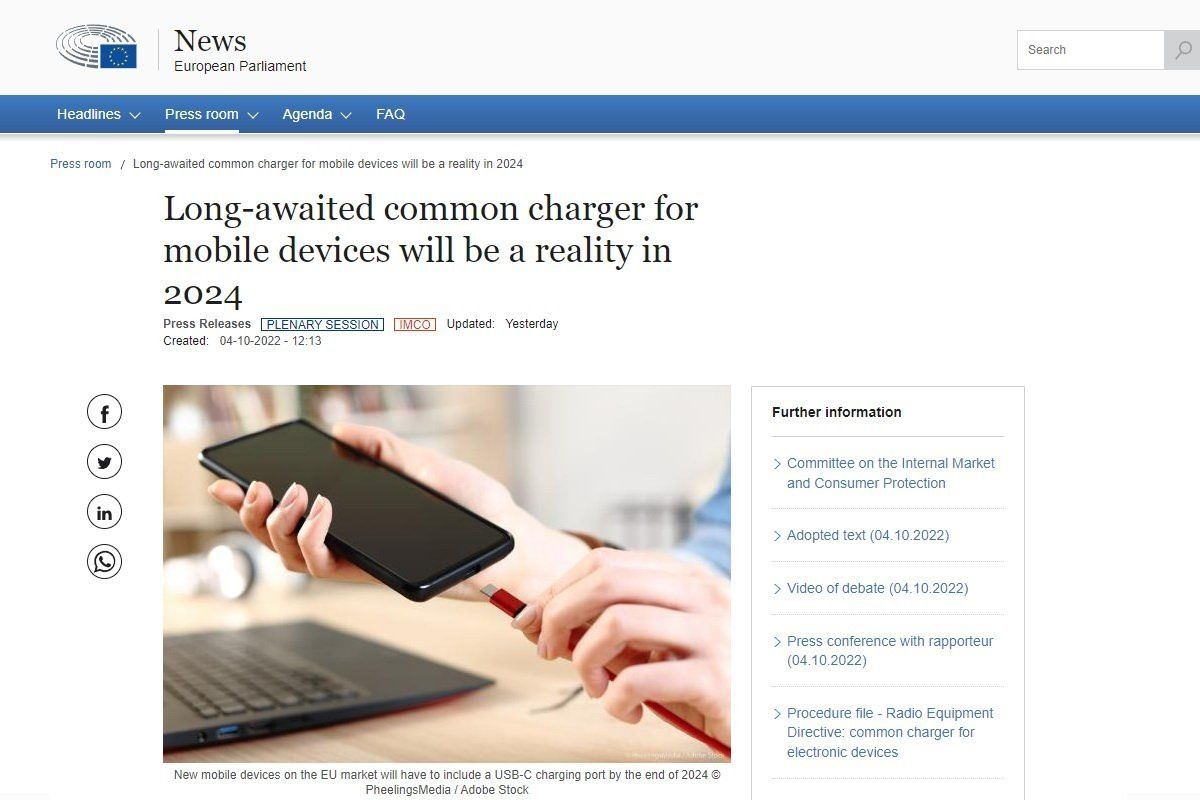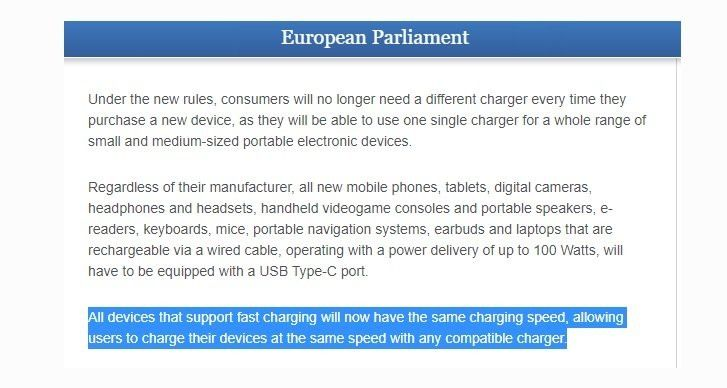On March 14, 2023, Weibo hashtag # If charging speed is limited or EU law is violated # The number of users participating in the discussion reached 5,203, and the number of topics read reached 110 million. It can be seen that everyone is concerned about the next generation of iPhone15 interface replacement and charging versatility and other changes.

In fact, in 2022, uniformity of interfaces and universality of accessories have been put on the EU agenda.

On October 4, 2022, the plenary session of the European Parliament voted to make USB-C the universal charging standard for small electronic devices by 2024, The law applies to newly manufactured mobile phones, tablets, digital cameras, laptops, headphones, handheld game consoles, portable speakers, e-readers, keyboards, mice, portable navigation systems and covers all common portable consumer electronics on the market today.

In addition to the unified USB-C interface for consumer electronic devices, the EU has made clear requirements for the fast charging specification agreement. The regulation clearly states: "Devices that support fast charging will have the same charging speed, allowing users to charge devices with any compatible charger at the same speed."
The previous iPhone 8-14 series, which supports fast charge, insisted on using Lightning port, but did not restrict the charger. Everyone can shake hands with a third-party charger and charge quickly. The iPhone 8-14 uses the standard USB PD 2.0 protocol, not a proprietary protocol, but an open framework up to this point. However, for the data cable, based on the Lightning interface, Apple adopts the practice of encryption chip, so users can only buy the data cable certified by Apple MFi to obtain the reliable charging speed.
The adoption of mandatory USB-C rules in the EU means that the iPhone 15 will be sold in the same way as other electronic products using USB-C.

However, the good times did not last long. In February 2023, it was reported from the supply chain that "Apple made a type C and lightning interface IC by itself, which will be used in this year's new iPhone and MFI-certified peripheral devices". The news casts doubt on the iPhone 15's USB-C versatility.
Usb-c interface supports positive and negative blind plug, power transmission specifications support 100W PD3.0, 140W+ PD3.1 and other universal fast charging standards, data interface support common 10Gbps USB 3.2 gen2, up to 40Gbps USB4 / Thunder 4 specifications, With a very high performance ceiling on a mobile phone,
According to the development trend of fast charge performance of overseas mobile phone brands such as Samsung and Apple, iPhone 15 should not introduce the new generation of charging technology such as dual cell and charge pump. It is estimated that iPhone 15 uses the USB PD specification of 9V3A, which is the same as iPhone 14 series, with the maximum power of 27W. According to the USB PD standard, E-Marker chip is not required for power transmission specifications with current lower than 3A. Therefore, it can be inferred that even if Apple adopts encrypted cable, it may not impose any restrictions on charging specifications, so as to avoid EU restrictions.
So why is Apple making MFi-certified USB-C cable chips? Xiaobian speculated that it should be differentiated in data transmission specifications, so that the iPhone can undertake more professional work, use more high-speed accessories, get faster data backup speed. For example, when the iPad was replaced with a USB-C port, the charging power did not change, but the wired data transfer rate was faster.
Post time: Mar-27-2023

